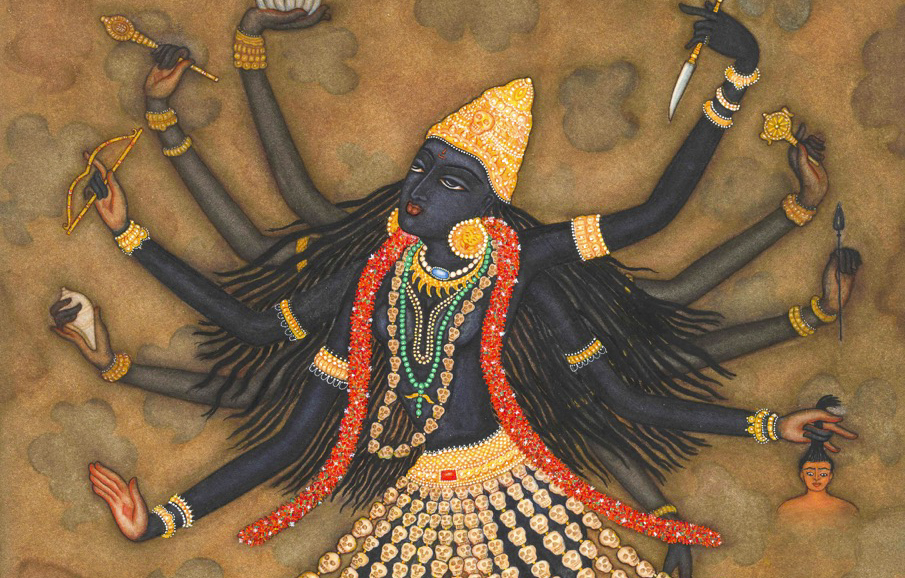She who destroys darkness also nurtures light—both exist within Kali’s sacred form
By Devansh Agarwal
Kali, whose name comes from the Sanskrit Kala, meaning time, is the Goddess of time, change and death. In the Devi Mahatmyam, She emanates from Durga’s brow to destroy chaos-wielding demons. When Her fury spirals beyond control, threatening the very Gods She came to protect, Shiva lies down before Her. Stepping on Him jolts Her back to awareness, and Her rage gives way to humility and calm.
This form, where Kali steps with Her right foot, is called Dakshina-Kali, symbolizing traditional worship. In Her left-footed form, She is Vama-Kali, representing the side of reality that society often rejects. Kali, central to the Shakta sect of Hinduism and to tantra, is especially revered in Bengal, Odisha and Assam. Growing up in this region, I was introduced to Her stories early and have been captivated ever since. But before exploring Kali Herself, it’s important to understand tantra.
Tantra, meaning “technique,” is a spiritual science using tools (yantra) and hymns (mantra) to connect with the Divine. It emphasizes personal experience through sound, symbols and invocation. Shakta Tantra includes two main clans: Shri-Kula, which reveres Tripura Sundari and suits householders, and Kali-Kula, focused on Kali and meant for those detached from social norms. Both see the Deity as a nurturing mother, though their methods differ.
Kali’s worship appeals because of Her dual nature—a loving yet powerful mother who can punish when needed. Though often misunderstood as dark or cruel, Her purpose is to destroy darkness, even by becoming one with it. She teaches acceptance and transformation. For me, surrendering to Her feels like an act of grace, as if even uttering Her name is only possible through Her blessing.
Spiritually, Kali represents the duality of nature—how things are not always what they seem and how every part of creation has a purpose. True spirituality is recognizing this, seeing that Self realization and God realization are two sides of the same coin. In Her highest form, Mahakali, She embodies supreme consciousness and eternal bliss—the natural state of all beings and the universe itself.
In sadhana, one may choose any Deity, understanding that all are expressions of the same divine consciousness, appearing in various forms to meet the needs of each soul’s journey. Though called by many names, they are fundamentally one.
A key philosophy in Hinduism is advaita, or non-duality, which teaches that man and God are not separate. There is one divine Essence present within every life form. The Self and the Supreme are the same, seen in countless ways by different people. Shaktas call this presence Shakti or Devi; Saivites see it as Lord Siva. Both are expressions of the same energy. Even modern science echoes this truth—energy cannot be created or destroyed, only transformed. Solar energy becomes food, then electricity, then movement. So, too, does divine energy have many forms.
For me, Kali embodies that truth. I worship Her with the understanding that She is one with Shiva, Vishnu and all others. The choice of Deity arises from individual nature and emotional makeup. One may turn to Krishna for love, another to Kali for intensity. My nature resonates with Her, and Hinduism honors that, asking only for sincere devotion and surrender—bhakti.
About The Author

Devansh Agarwal, 20, is a student interested in Hinduism and writing. His goal is to help people see the beauty of his religion, while dispelling inaccuracies about it.

Thank you for educating me on Kali.